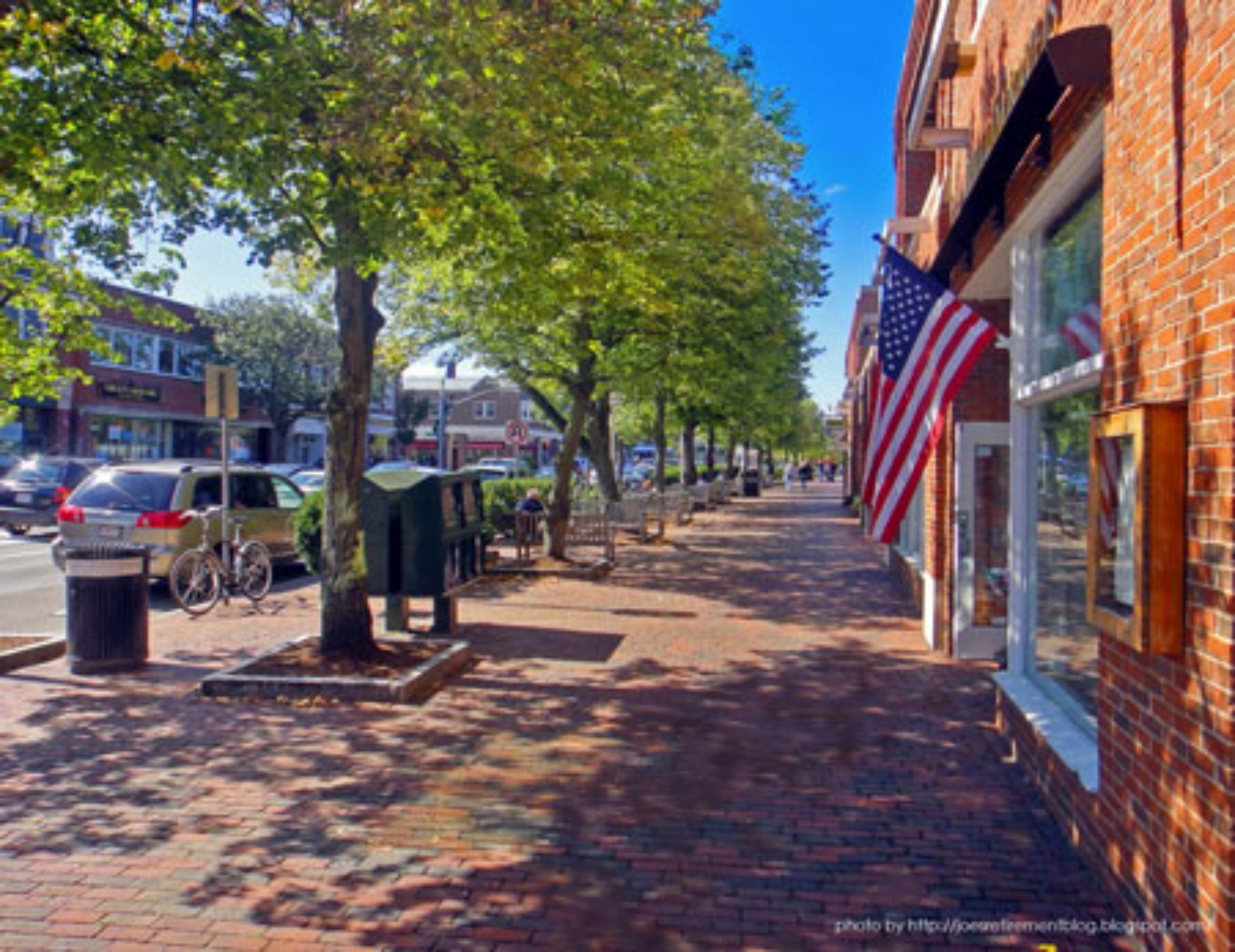 In 1966, Hideo Sasaki, Norman Fletcher, and Walter Pierce, all renowned practitioners of modernism and residents of Lexington, Massachusetts, produced a “Plan for Lexington Center,” an elegant design to turn a drab suburban center into a series of “living rooms” in which the community of Lexington could congregate. This design, executed in 1967, has been highly successful and has stood the test of time, as evidenced by a 2008 Tufts University study designating Lexington as a “Model Town Center.” However, now this iconic streetscape is threatened.
In 1966, Hideo Sasaki, Norman Fletcher, and Walter Pierce, all renowned practitioners of modernism and residents of Lexington, Massachusetts, produced a “Plan for Lexington Center,” an elegant design to turn a drab suburban center into a series of “living rooms” in which the community of Lexington could congregate. This design, executed in 1967, has been highly successful and has stood the test of time, as evidenced by a 2008 Tufts University study designating Lexington as a “Model Town Center.” However, now this iconic streetscape is threatened.
Credit: www.joesretirementblog.blogspot.com
The aims for the 1966 re-design were lofty, as stated in the section of the plan titled: “The Center as a Work of Art:”
"The aspirations of this study and design effort are high, higher than just profit and service and symbolism. Higher, too, than additionally tidying up the Center by replacing old facades with new ones and sprucing up the signs…Higher, too, than inspiring those new facades each to be brilliantly designed, though hopefully including that as well. The aim of this effort is to guide development in such a way that the Center as a whole has artistic merit even beyond the sum of the merit of its individual buildings, as a result of the relationships among its buildings, movement channels, and furnishings."

Lexington Center 1938


The current plan to reconstruct the Town Center threatens to damage and perhaps destroy much of the larger, high-quality design that has made Lexington Center an attractive place for the entire community of Lexington to walk, shop, spend time, and use as part of everyday life.
WHAT'S AT STAKE
- Destruction of thoughtful historic design that knits the center together, from the municipal complex to the Battle Green.
- Elimination of careful visual separation of pedestrians from ever more busy traffic, making the Center feel much more like an automobile-oriented mall.
- Removal of the existing tree cover and replacement with less effective, immature planting.
- Introduction of inauthentic decorative elements that have no place in Lexington's history.
After celebrating the fiftieth anniversary of the Center plan this past fall, it is hoped that the town’s governing body of Selectmen will heed the recommendations of its own ad hoc design committee that strongly advocates for maintaining this jewel in the center of the community.
Visit the Save Our Center website for more information about these efforts and upcoming public hearings and sign the petition.
